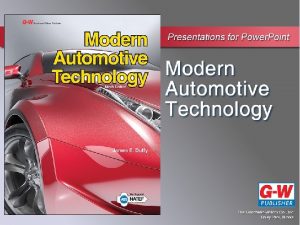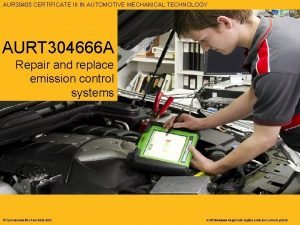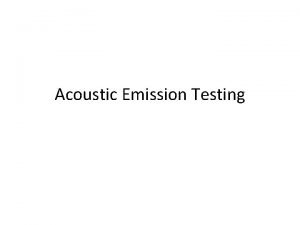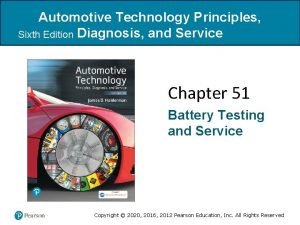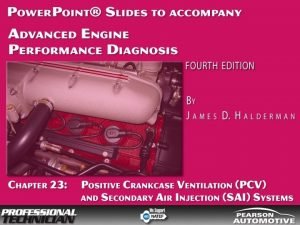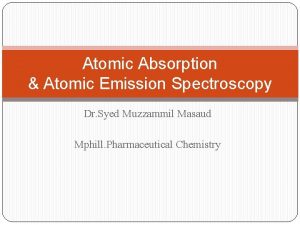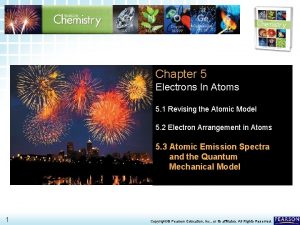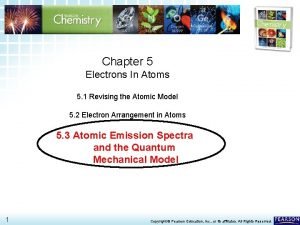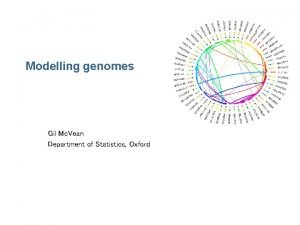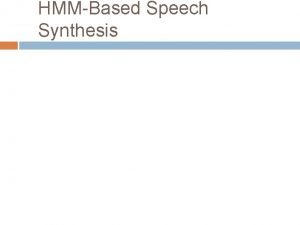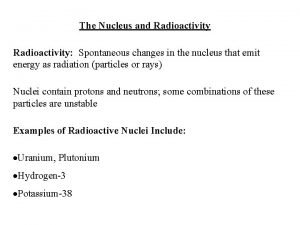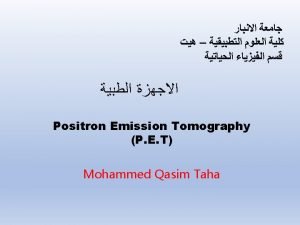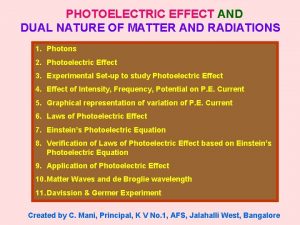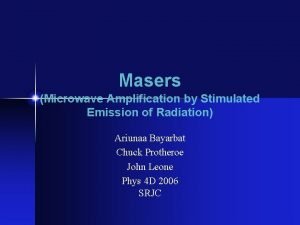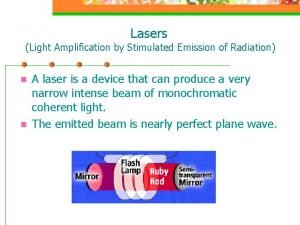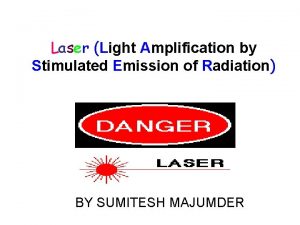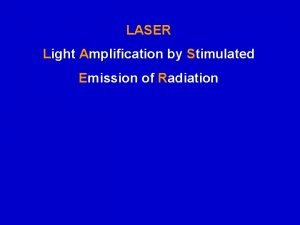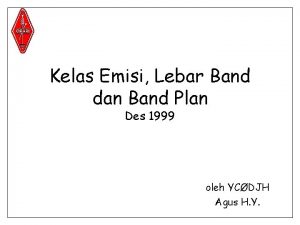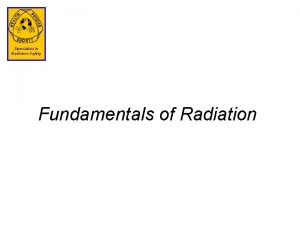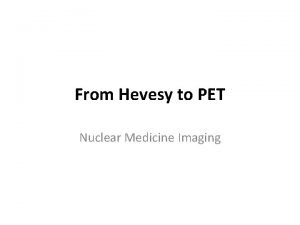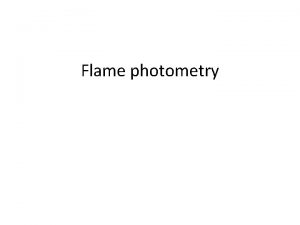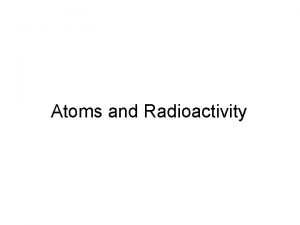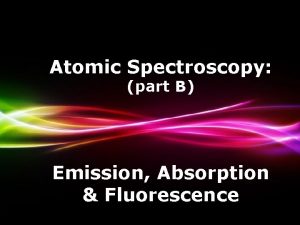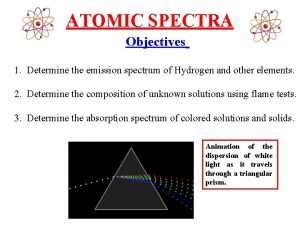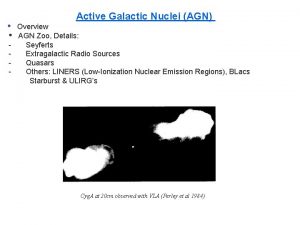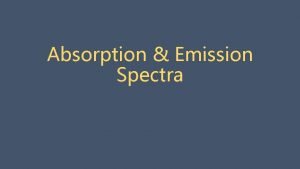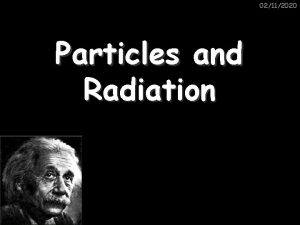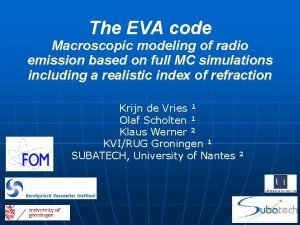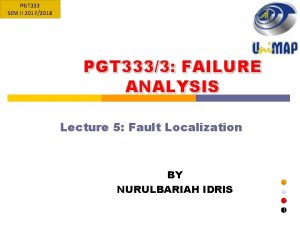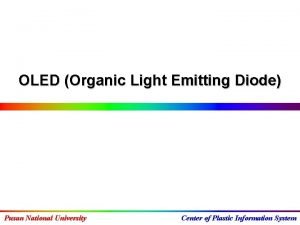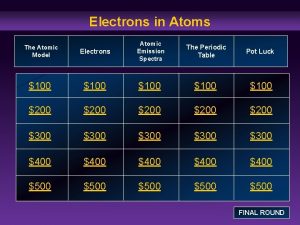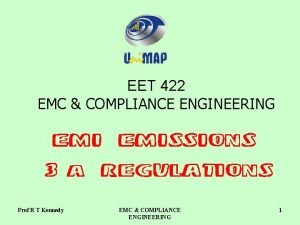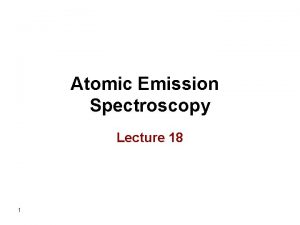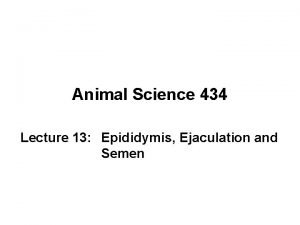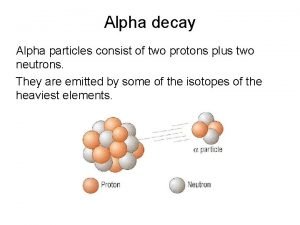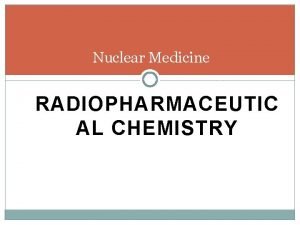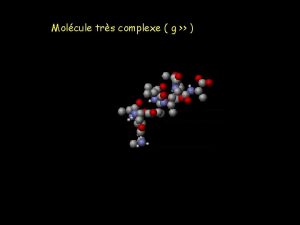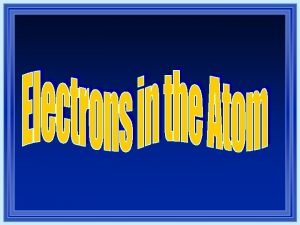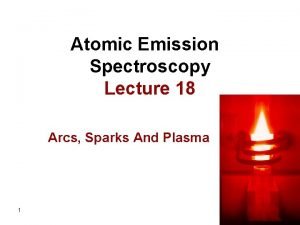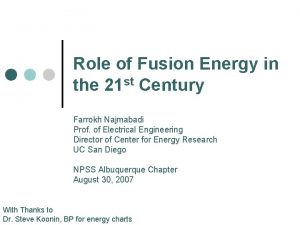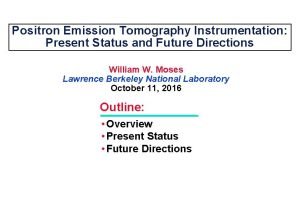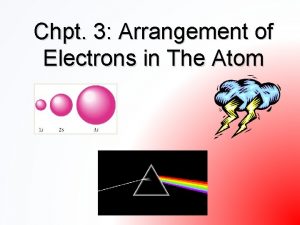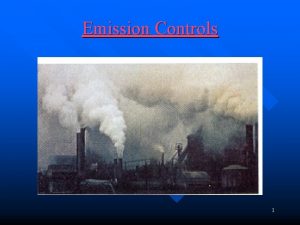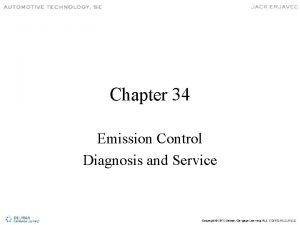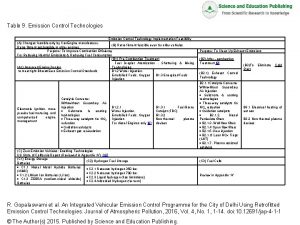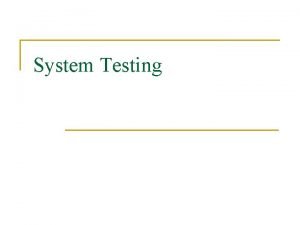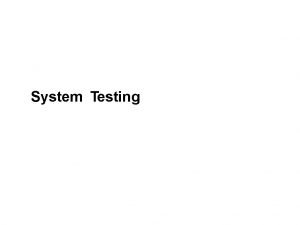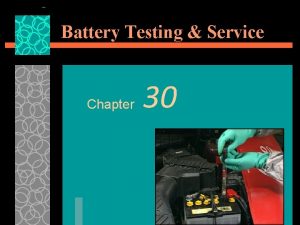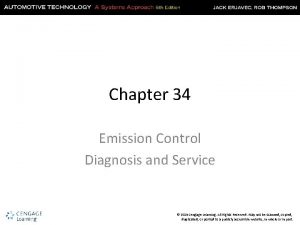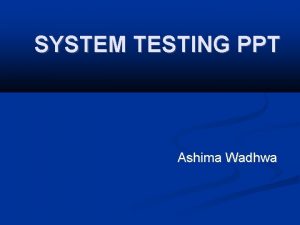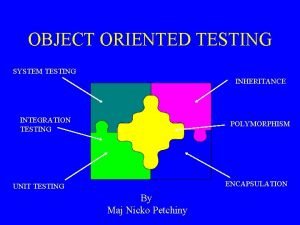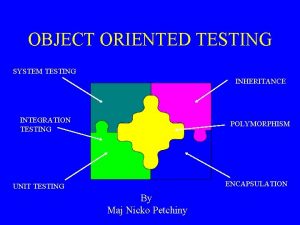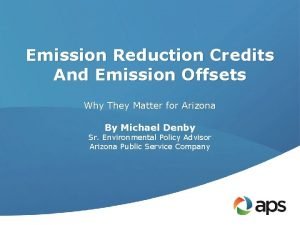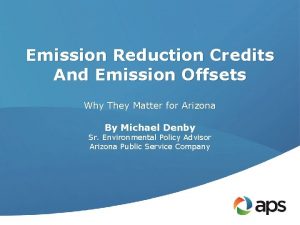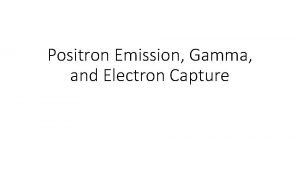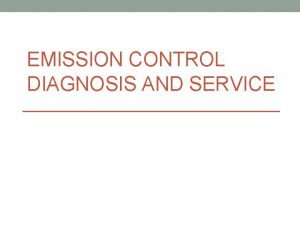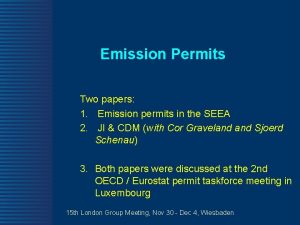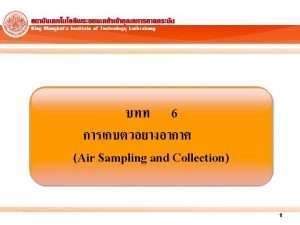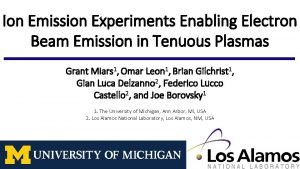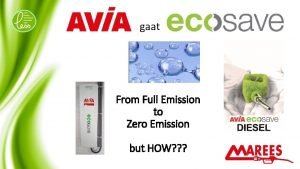Chapter 52 Emission Control System Testing Service and





































































- Slides: 69


Chapter 52 Emission Control System Testing, Service, and Repair

Objectives After studying this chapter, you will be able to: • Explain the use of exhaust gas analyzers. • Inspect and troubleshoot emission control systems. • Perform periodic service operations on emission control systems. • Test individual emission control components. © Goodheart-Willcox Co. , Inc. Permission granted to reproduce for educational use only.

Objectives • Replace or repair major emission control components. • Demonstrate and practice safe work procedures when working on emission control systems. • Correctly answer ASE certification test questions on emission control system testing and service. © Goodheart-Willcox Co. , Inc. Permission granted to reproduce for educational use only.

Computer-Controlled Emission System Service • ECM controls – Fuel injection system – EGR valve – Evaporative emissions control • Any of these systems can affect vehicle’s operation and increase emissions © Goodheart-Willcox Co. , Inc. Permission granted to reproduce for educational use only.

Scanning Emission Systems • Check for stored trouble codes • Retrieve scan tool information • If no trouble codes are set, review live data readings for both oxygen sensors • Check for bad O 2 sensor • Look at secondary oxygen sensor reading for failed catalytic converter • Fouled oxygen sensors or clogged catalytic converter are common problems on high mileage vehicles © Goodheart-Willcox Co. , Inc. Permission granted to reproduce for educational use only.

Emission Maintenance Reminder • Circuit automatically turns on dash light to indicate need for emission control system service • After making prescribed adjustments and repairs, turn off emission maintenance reminder © Goodheart-Willcox Co. , Inc. Permission granted to reproduce for educational use only.

Inspecting Emission Control Systems • Inspect all engine vacuum hoses and wires • Check – Disconnected wires – Oil leaks onto the oxygen sensor – Extremely dirty engine oil – Blowby • All can trip trouble codes or increase air pollution © Goodheart-Willcox Co. , Inc. Permission granted to reproduce for educational use only.

Engine Exhaust Gases • Harmful – Hydrocarbons (HC) – Carbon monoxide (CO) – Oxides of nitrogen (NOx) • Other by-products of combustion – Carbon dioxide (CO 2) – Oxygen (O 2) – Water (H 2 O) © Goodheart-Willcox Co. , Inc. Permission granted to reproduce for educational use only.

Exhaust Gas Analyzer Indicates excessive emissions • Fuel metering problems • Engine mechanical problems • Vacuum leaks • Ignition system problems • PCV troubles • Faulty air injection system • Evaporative emissions control system problems • Computer control system troubles • Catalytic converter condition © Goodheart-Willcox Co. , Inc. Permission granted to reproduce for educational use only.

Types of Exhaust Gas Analyzers • Two-gas exhaust analyzer – Measures amount of hydrocarbons (HC) and carbon monoxide (CO) in exhaust gases • Four-gas exhaust analyzer – Measures quantity of hydrocarbons (HC), carbon monoxide (CO), carbon dioxide (CO 2), and oxygen (O 2) in engine’s exhaust © Goodheart-Willcox Co. , Inc. Permission granted to reproduce for educational use only.

Types of Exhaust Gas Analyzers (Cont. ) • Five-gas exhaust analyzer – Measures hydrocarbons, carbon monoxide, carbon dioxide, oxygen, and oxides of nitrogen – Latest and most informative type of exhaust gas analyzer © Goodheart-Willcox Co. , Inc. Permission granted to reproduce for educational use only.

Using an Exhaust Gas Analyzer • Calibration – Zeroing meter scales while sampling clean air with analyzer • Calibration gas – Mixture of several gases – Sample used by newer analyzers to adjust meter readings for accuracy (OTC) © Goodheart-Willcox Co. , Inc. Permission granted to reproduce for educational use only.

Using an Exhaust Gas Analyzer (Cont. ) • Plug machine in and allow it to warm up as described by manufacturer • After warm-up, zero and calibrate analyzer • To begin test, install probe in vehicle’s tailpipe • If working in enclosed shop, slide probe through hole in shop’s vent hose © Goodheart-Willcox Co. , Inc. Permission granted to reproduce for educational use only.

Exhaust Gas Analyzer Readings • Exhaust gas analyzer readings determine chemical content of engine’s exhaust gases • Test readings must be within state-regulated specifications for geographic area and vehicle year • Generally, new vehicles have stricter specifications © Goodheart-Willcox Co. , Inc. Permission granted to reproduce for educational use only.

Hydrocarbon Readings • Causes of higher-than normal HC readings – Fuel system malfunction – Improper ignition timing – Engine problems – Faulty emission control system – Ignition system troubles – Computer control system problems © Goodheart-Willcox Co. , Inc. Permission granted to reproduce for educational use only.

CO Readings • High carbon monoxide results from incomplete burning of fuel • Causes of high carbon monoxide readings – Fuel system problems – Emission control system troubles – Incorrect ignition timing © Goodheart-Willcox Co. , Inc. Permission granted to reproduce for educational use only.

Oxides of Nitrogen Readings • Since oxides of nitrogen are toxic, some state air quality agencies have made exhaust emission measurements with five-gas analyzer mandatory • Typical causes of high NOx emissions – High combustion chamber temperatures – EGR system problems © Goodheart-Willcox Co. , Inc. Permission granted to reproduce for educational use only.

Carbon Dioxide Readings • Carbon dioxide is by-product of combustion – Produced when one carbon molecule combines with two oxygen molecules in combustion chamber • CO 2 readings provide data for checking and adjusting air-fuel ratio • Oxygen and carbon dioxide levels are compared when evaluating content of engine exhaust © Goodheart-Willcox Co. , Inc. Permission granted to reproduce for educational use only.

Oxygen Readings • Oxygen needed for catalytic converter to burn HC and CO emissions • Without oxygen in engine exhaust, exhaust emissions can pass through converter and out tailpipe • Oxygen level in engine exhaust sample is accurate indicator of vehicle’s air-fuel mixture © Goodheart-Willcox Co. , Inc. Permission granted to reproduce for educational use only.

State Emissions Testing Programs • Emissions testing programs or inspection and maintenance programs – Take exhaust gas readings as vehicle’s engine operates at idle and at set rpms • May check vehicle for presence of catalytic converter and fuel inlet restrictor • Test procedures vary from state to state © Goodheart-Willcox Co. , Inc. Permission granted to reproduce for educational use only.

IM 240 • Enhanced emissions test that requires vehicle to be operated on dynamometer at speeds of up to 55 mph for 240 seconds while exhaust gas emissions are measured • Two additional tests may be required in some areas – Evaporative emissions system purge test – Evaporative emission system pressure test © Goodheart-Willcox Co. , Inc. Permission granted to reproduce for educational use only.

IM 240 (Cont. ) • Evaporative emissions system purge test – Measures flow of fuel vapors into engine while performing IM 240 test • Evaporative emissions system pressure test – Checks system for leaks into atmosphere – Performed during IM 240 test © Goodheart-Willcox Co. , Inc. Permission granted to reproduce for educational use only.

Smoke Generator Testing • Smoke generator – Testing tool that produces smoke and injects it into any sealed system to find leaks • Before smoke testing, inspect for obvious problems that could cause leakage • Smoke leakage test safety rules – Engine must be off when smoke testing – Do not leave vehicle unattended – Do not bring ignition source close to vehicle – Work in a well ventilated area and wear eye protection © Goodheart-Willcox Co. , Inc. Permission granted to reproduce for educational use only.

Smoke Generator Testing (Cont. ) To perform smoke leakage test • Use scan tool or diagnostic tablet to close evaporative vent valve to seal system • Fill smoke generator with the recommended test oil for generating smoke • Connect generator vacuum line to evaporative hose running to engine intake manifold or vacuum brake booster – Use T-fitting to test whole system at once • Seal engine air intake duct with large foam rubber cone or plastic bag and tape © Goodheart-Willcox Co. , Inc. Permission granted to reproduce for educational use only.

Smoke Generator Testing (Cont. ) • Turn generator on so that smoke is injected into test vacuum hose and system • Adjust smoke generator flow control valve so that flow indicator is about halfway up on its clear plastic graduated scale • Remove gas cap until smoke comes out of filler neck • Reinstall and tighten gas cap • Keep injecting smoke into system until the pressure reads maximum allowable pressure • Observe flow control meter © Goodheart-Willcox Co. , Inc. Permission granted to reproduce for educational use only.

Smoke Generator Testing (Cont. ) • Any further flow into system indicates leakage • Look very closely near gas tank, vent lines, and engine compartment for smoke – Halogen light will help you see smoke leakage • Repair leak and smoke test system again – Cracked, leaking, vacuum hose, rusted metal evaporator line, or similar problem • Erase trouble codes and test-drive vehicle to verify your repairs © Goodheart-Willcox Co. , Inc. Permission granted to reproduce for educational use only.

Vehicle Inspection Reports • Summarizes why vehicle either passed or failed state-mandated emission test • Vehicle information section – Identifies type of motor vehicle – Lists license plate number, VIN, year, make, model, engine type, fuel type, test number, and type of emission test needed • OBD or non-OBD © Goodheart-Willcox Co. , Inc. Permission granted to reproduce for educational use only.

Vehicle Inspection Reports (Cont. ) • Repair information section – Provides vehicle owner with instructions for having vehicle repaired if it fails • Inspection facility information – Section identifies inspections facility and inspectors, as well as test date and time • Exhaust emission readings section – Gives readings for HC, CO, and NOx, and OBD results, if applicable © Goodheart-Willcox Co. , Inc. Permission granted to reproduce for educational use only.

Vehicle Inspection Report © Goodheart-Willcox Co. , Inc. Permission granted to reproduce for educational use only.

Drive Trace Report • Printed out to help technician find and repair problems causing increased air pollution • Drive trace – Graph showing emission levels over test time – Five drive traces normally given on each report • HC, CO, NOx, CO 2, and purge © Goodheart-Willcox Co. , Inc. Permission granted to reproduce for educational use only.

Drive Trace Report (Cont. ) • Emission standard base line or cut point – Average allowable emission level for specific model year • Use this information and knowledge of engine, fuel, ignition, and emission control system operation to pinpoint and repair problem sources © Goodheart-Willcox Co. , Inc. Permission granted to reproduce for educational use only.

Drive Trace Report (Cont. ) © Goodheart-Willcox Co. , Inc. Permission granted to reproduce for educational use only.

Vacuum Solenoid Service • Various vacuum solenoids used to interface emission system electronics with devices that operate off of engine vacuum • Vacuum hose diagram – Shows routing of all vacuum hoses • When troubleshooting vacuum solenoids, check for hard, brittle hoses that can leak and prevent normal operation © Goodheart-Willcox Co. , Inc. Permission granted to reproduce for educational use only.

Vacuum Solenoid Service (Cont. ) • Connect voltmeter to solenoid terminals and start engine – Make sure voltage gets to unit when needed • Check that solenoid valve opens and blocks vacuum • Connect vacuum gauge or hand pump to vacuum connections on unit © Goodheart-Willcox Co. , Inc. Permission granted to reproduce for educational use only.

PCV System Service • Inoperative PCV system – Increases exhaust emissions – Causes engine sludging and wear – Rough engine idle • Leaking PCV system – Causes vacuum leak – Produces lean air-fuel mixture • Causing rough engine idle • Restricted PCV system – Enriches fuel mixture • Affecting engine idle and causing engine to surge and emit black smoke © Goodheart-Willcox Co. , Inc. Permission granted to reproduce for educational use only.

PCV System Testing • To quickly test PCV valve, pull valve out of engine and shake it – If PCV valve does not rattle when shaken, replace valve © Goodheart-Willcox Co. , Inc. Permission granted to reproduce for educational use only.

PCV System Testing (Cont. ) • With engine idling, place your finger over end of valve – You should feel suction – Engine idle speed should drop about 40– 80 rpms – If you cannot feel vacuum, PCV valve or hose might be plugged with sludge • PCV valve tester will measure exact amount of airflow through system © Goodheart-Willcox Co. , Inc. Permission granted to reproduce for educational use only.

PCV System Testing (Cont. ) • Four- or five-gas exhaust analyzer can also be used to check general condition of PCV system – Plugged PCV system will show up on exhaust analyzer when oxygen and carbon monoxide do not change • Crankcase dilution – Excessive blowby or fuel in oil – Will show up as excessive (1% or more) increase in oxygen or 1% or more decrease in carbon monoxide © Goodheart-Willcox Co. , Inc. Permission granted to reproduce for educational use only.

Evaporative Emissions System Service • Faulty evaporative emissions control system – Fuel odors – Fuel leakage – Fuel tank collapse – Excess pressure in fuel tank – Rough engine idle © Goodheart-Willcox Co. , Inc. Permission granted to reproduce for educational use only.

Evaporative Emissions System Service (Cont. ) • Cause of these problems – Defective fuel tank pressure-vacuum cap – Leaking charcoal canister valves – Deteriorated hoses – Incorrect hose routing © Goodheart-Willcox Co. , Inc. Permission granted to reproduce for educational use only.

EGR System Service • EGR system malfunctions cause – Engine stalling at idle – Rough idle – Detonation – Poor fuel economy • If EGR valve sticks open, it causes – Lean air-fuel mixture – Engine will run rough at idle or stall © Goodheart-Willcox Co. , Inc. Permission granted to reproduce for educational use only.

EGR System Service (Cont. ) • If EGR fails to open or exhaust passage is clogged, higher combustion temperatures can cause abnormal combustion and knocking • Check that vacuum hoses in EGR system are in good condition – They can become hardened, which causes leakage • Check for proper wire routing and good electrical connections on digital EGR valves © Goodheart-Willcox Co. , Inc. Permission granted to reproduce for educational use only.

EGR System Testing (Vacuum Type) • Allow engine to warm • Operating accelerator linkage by hand, increase engine speed to 2000– 3000 rpms very quickly • If visible, observe movement of EGR valve stem • Stem should move as engine is accelerated – If it does not move, EGR system is not functioning © Goodheart-Willcox Co. , Inc. Permission granted to reproduce for educational use only.

EGR System Testing (Vacuum Type) (Cont. ) • • To test EGR valve, idle engine Connect hand vacuum pump to EGR valve Plug supply vacuum line to EGR valve When vacuum is applied to EGR valve with pump, engine should begin to miss or stall – This lets you know that EGR valve is opening © Goodheart-Willcox Co. , Inc. Permission granted to reproduce for educational use only.

EGR System Testing (Electronic Type) • Most problems with late-model electronic, or digital, EGR valves will trip trouble code – Scan tool will quickly and easily isolate problems • To pinpoint test a digital EGR valve, connect handheld scope to wires going to valve – Scope’s waveform will measure voltage applied to EGR from ECM and will also check condition of EGR windings © Goodheart-Willcox Co. , Inc. Permission granted to reproduce for educational use only.

EGR System Testing (Electronic Type) (Cont. ) (Fluke) © Goodheart-Willcox Co. , Inc. Permission granted to reproduce for educational use only.

Air Injection System Service • Air injection system problems can cause engine backfiring, other noises, and increased HC and CO emissions • Air injection system maintenance includes – Replacing pump inlet filter – Adjusting pump belt tension – Inspecting condition of hoses and lines © Goodheart-Willcox Co. , Inc. Permission granted to reproduce for educational use only.

Testing Air Injection Systems • Four- or five-gas exhaust analyzer provides quick and easy method of testing air injection system • Disable air injection system – Remove air pump belt or use pliers to pinch hoses to air distribution manifold • Without air injection, exhaust analyzer’s oxygen reading should drop approximately 2%– 5%, while hydrocarbon and carbon monoxide readings should increase © Goodheart-Willcox Co. , Inc. Permission granted to reproduce for educational use only.

Pulse Air System Service • Inspect all hoses and lines and measure exhaust’s oxygen content with four- or five-gas analyzer • Exhaust analyzer oxygen readings should drop with pulse air system disabled – If readings do not drop, check action of aspirator valves © Goodheart-Willcox Co. , Inc. Permission granted to reproduce for educational use only.

Catalytic Converter Service • Catalytic converter problems caused by – Contamination – Overheating – Extended service • Clogged catalytic converter, resulting from deposits or overheating, can increase exhaust system back pressure © Goodheart-Willcox Co. , Inc. Permission granted to reproduce for educational use only.

Catalytic Converter Service (Cont. ) • Exhaust back pressure test will check for clogged catalytic converter • Remove front oxygen sensor and install pressure gauge into threaded hole (Snap-on Tool Corp. ) © Goodheart-Willcox Co. , Inc. Permission granted to reproduce for educational use only.

Catalytic Converter Service (Cont. ) • Start engine • If pressure gauge reads too high, converter, muffler, or exhaust pipe is restricted • Disconnect parts one at a time – When back pressure drops, you have found source of restriction © Goodheart-Willcox Co. , Inc. Permission granted to reproduce for educational use only.

Testing Catalytic Converter Efficiency • Exhaust gas analyzer can be used to check general condition of catalytic converter – May need to disable air injection or pulse air system before performing this test • Measure oxygen and carbon monoxide at tailpipe • Oxygen readings should be above 5% © Goodheart-Willcox Co. , Inc. Permission granted to reproduce for educational use only.

Catalyst Replacement • To install new pellets in older catalytic converter, follow service manual instructions • Use special vibrating tool to shake old pellets out of a hole in converter • Install new pellets and replace service plug • Procedure not used frequently – Faster and easier to simply replace catalytic converter © Goodheart-Willcox Co. , Inc. Permission granted to reproduce for educational use only.

Catalytic Converter Replacement • Remove clamps that secure converter to exhaust pipes • Use muffler cutter or chisel to cut and loosen old converter from exhaust pipes – Hammer blows to converter should free it from vehicle © Goodheart-Willcox Co. , Inc. Permission granted to reproduce for educational use only.

Catalytic Converter Replacement (Cont. ) • Sometimes catalytic converter is integral part of the header pipe • With this design, converter and pipe may have to be replaced together • When installing new converter, use new gaskets and reinstall heat shields © Goodheart-Willcox Co. , Inc. Permission granted to reproduce for educational use only.

Oxygen Sensor Service • If gas mileage is 10% to 15% lower than normal, suspect a lazy oxygen sensor • Lazy O 2 sensor – Will not alter output signal fast enough to maintain efficient air-fuel ratio • Dead O 2 sensor – Has little or no resistance or voltage output change © Goodheart-Willcox Co. , Inc. Permission granted to reproduce for educational use only.

Testing Oxygen Sensors (Fluke) © Goodheart-Willcox Co. , Inc. Permission granted to reproduce for educational use only.

Testing Oxygen Sensors (Cont. ) • Depending on driving conditions, O 2 voltage will rise and fall but usually averages around 0. 450 V dc • To test – Shut off engine and insert test lead in input terminals – Set rotary switch to volts dc – Manually select 4 V range by depressing range button three times © Goodheart-Willcox Co. , Inc. Permission granted to reproduce for educational use only.

Testing Oxygen Sensors (Cont. ) • • Connect test leads Start engine – If O 2 sensor unheated, fast-idle the car for a few minutes – Then press MIN MAX to select MIN MAX recording • Press MIN MAX button to display maximum O 2 voltage – Press again to display minimum voltage – Press again to display average voltage; press and hold down MIN MAX for 2 seconds to exit © Goodheart-Willcox Co. , Inc. Permission granted to reproduce for educational use only.

Testing Oxygen Sensors (Cont. ) • Use oscilloscope to check signal leaving O 2 sensor • Compare actual voltage or resistance levels to scan tool readout values and manufacturer’s specifications (Fluke) © Goodheart-Willcox Co. , Inc. Permission granted to reproduce for educational use only.

Oxygen Sensor Replacement • Disconnect negative battery cable • Separate sensor from wiring harness by unplugging connector – Never pull on wires themselves, as damage may result • Spray sensor threads with generous coat of penetrating oil © Goodheart-Willcox Co. , Inc. Permission granted to reproduce for educational use only.

Oxygen Sensor Replacement (Cont. ) • Use special sensor socket to remove sensor from exhaust system • Inspect sensor for signs of contamination • Obtain and install correct replacement oxygen sensor • Start sensor by hand then carefully tighten sensor with wrench or socket • Reconnect wire connector and check system operation © Goodheart-Willcox Co. , Inc. Permission granted to reproduce for educational use only.

OBD II Drive Cycle • Normally performed whenever battery or ECM has been disconnected, or after diagnostic trouble codes have been erased • Some states require drive cycle to be performed before emissions test • Drive cycle is different for each vehicle, so check service manual for specific instructions © Goodheart-Willcox Co. , Inc. Permission granted to reproduce for educational use only.

OBD II Drive Cycle (Cont. ) • Check that coolant temperature is low enough to allow ECM to start in open loop mode • Attach scan tool, and set tool to record ECM status as engine operates – Some scan tools have dedicated drive cycle option © Goodheart-Willcox Co. , Inc. Permission granted to reproduce for educational use only.

OBD II Drive Cycle (Cont. ) • Drive cycle will cover – Engine warm-up – Idling – Accelerating – Decelerating – Cruising • Typical drive cycle will take from 8– 15 minutes to complete © Goodheart-Willcox Co. , Inc. Permission granted to reproduce for educational use only.

OBD II Drive Cycle (Cont. ) © Goodheart-Willcox Co. , Inc. Permission granted to reproduce for educational use only.

Emission Control Information Sticker • Emission control information sticker, or label gives – Important engine data – Evaporative emissions information – Schematics – Specifications for complying with EPA regulations © Goodheart-Willcox Co. , Inc. Permission granted to reproduce for educational use only.
 Emission control system components
Emission control system components Emission control system repair
Emission control system repair Application of acoustic emission testing
Application of acoustic emission testing Control structure testing in software engineering
Control structure testing in software engineering Chapter 51 battery testing and service
Chapter 51 battery testing and service The pcv system controls which exhaust emission(s)?
The pcv system controls which exhaust emission(s)? Positive negative testing
Positive negative testing Cs 3250
Cs 3250 Difference between absorption and emission spectrum
Difference between absorption and emission spectrum Atomic emission spectra and the quantum mechanical model
Atomic emission spectra and the quantum mechanical model Atomic emmision spectrum
Atomic emmision spectrum Emission and absorption spectra grade 12
Emission and absorption spectra grade 12 Tga vean
Tga vean Transition and emission probability
Transition and emission probability What is domain testing
What is domain testing Kv charts in software testing
Kv charts in software testing Data flow testing strategies in software testing
Data flow testing strategies in software testing Anuj magazine
Anuj magazine Neighborhood integration testing
Neighborhood integration testing Cause effect graphing technique
Cause effect graphing technique Decision table testing in software testing
Decision table testing in software testing Decision table testing examples
Decision table testing examples Black box testing adalah
Black box testing adalah Behavior testing adalah
Behavior testing adalah Extended entry decision table
Extended entry decision table Rigorous testing in software testing
Rigorous testing in software testing Testing blindness in software testing
Testing blindness in software testing Component testing is a black box testing
Component testing is a black box testing Domain testing in software testing
Domain testing in software testing Power brake system
Power brake system Gamma emission equation
Gamma emission equation Alpha particle symbol
Alpha particle symbol Positron emission
Positron emission Einstein equation for photoelectric emission is
Einstein equation for photoelectric emission is Microwave amplification by stimulated emission of radiation
Microwave amplification by stimulated emission of radiation Metastable state in laser
Metastable state in laser Properties of laser light
Properties of laser light Stimulated emission
Stimulated emission Class of emission
Class of emission Bread toasting: gas formation color change light emission
Bread toasting: gas formation color change light emission Neutron emission
Neutron emission Positron emission tomography
Positron emission tomography Flame photometer introduction
Flame photometer introduction Alpha decay
Alpha decay Fluorescence spectroscopy - ppt
Fluorescence spectroscopy - ppt Beilstein test
Beilstein test Principles of atomic emission spectroscopy
Principles of atomic emission spectroscopy Emission vs ejaculation
Emission vs ejaculation Miller zoo emission
Miller zoo emission Absorption vs emission
Absorption vs emission Lepton number table
Lepton number table Radio emission codes
Radio emission codes Photo emission microscopy failure analysis
Photo emission microscopy failure analysis Oled cathode
Oled cathode Atomic emission spectra periodic table
Atomic emission spectra periodic table Cispr 22 radiated emission limits
Cispr 22 radiated emission limits Flame photometry instrumentation
Flame photometry instrumentation Emission vs ejaculation
Emission vs ejaculation Uranium alpha decay
Uranium alpha decay Positron emission tomography
Positron emission tomography Positron emission tomography
Positron emission tomography Complexe g emission
Complexe g emission Why are atomic emission spectra discontinuous
Why are atomic emission spectra discontinuous Atomic emission spectroscopy lecture notes
Atomic emission spectroscopy lecture notes Energy emission
Energy emission Energy emission
Energy emission Pet/ct
Pet/ct Energy emission
Energy emission Heisenberg uncertainty principle
Heisenberg uncertainty principle Emission
Emission
